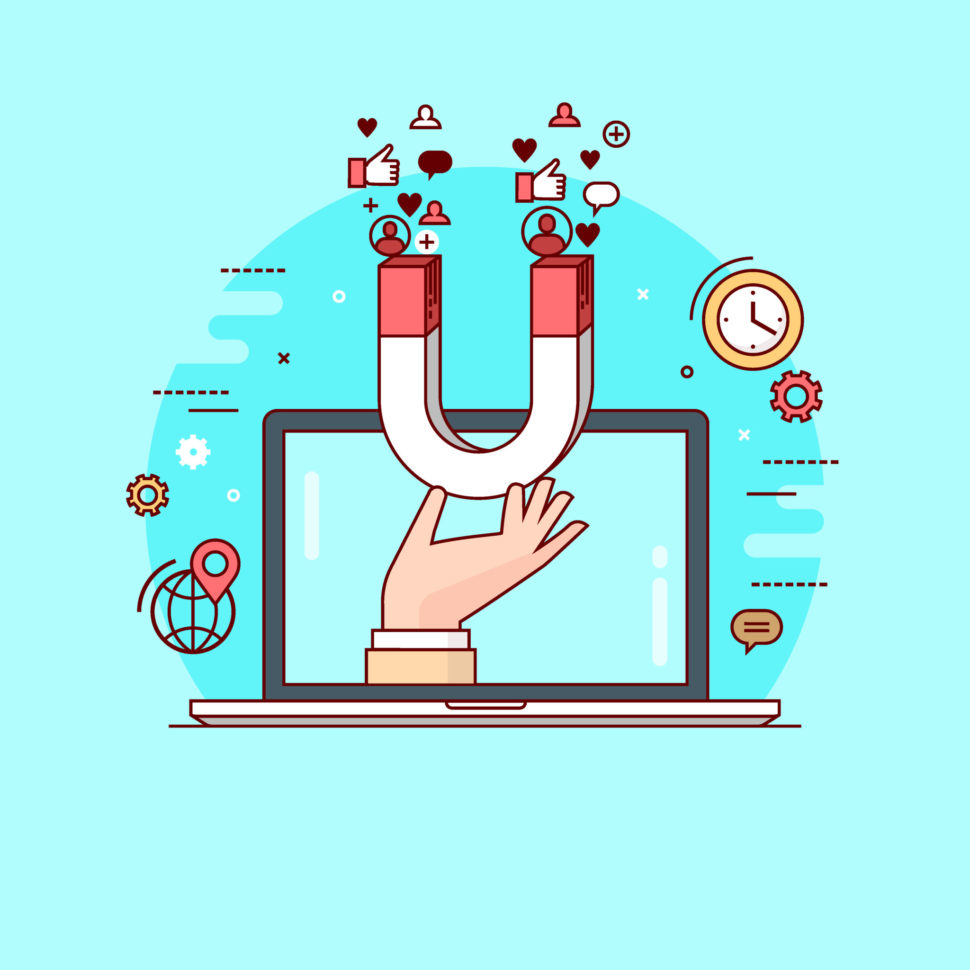There is no denying it: the power of influencers is very real.
With the ever-changing landscape of social media, it can be stressful keeping up. Your B2C business will suffer if you can’t adapt. Though simmering for the last two years, many companies are now seeing the many ways that influencers will be their best tool for marketing in 2018.
How could influencer marketing trends for 2018 bolster your B2C business?
5 Ways #Influencers Can Improve Your B2C BusinessClick To Tweet
Is Influencer Marketing Really That Popular?
Though many more traditional companies often ignore the practice, influencer marketing is one of the biggest marketing trends of 2018. Instagram famous individuals peddle everything from juice cleanses to sunglasses to sunscreen. It used to be a more cost-effective route, but now, it’s a different story.
Per numbers in adweek.com, Instagram posts can average around $300 per post. That means that indie brands or low budget companies can’t effectively utilize the most popular or sought after social media influencers. However, while the upper echelon of influencers might be out of reach, there are plenty of lower levels to explore.
Often, it pays to use influencer marketing. More and more companies are investing in influencer marketing moving forward. In fact, 81% of marketers use influencer content with 51% of those stating it has better ROI than brand-crafted content.
So, what are the trends for influencer marketing in 2018? This concept has been around much longer than most companies realize. It’s only now that they are capitalizing on the massive market of influencers.

Influencers as Brand Ambassadors & Consumers
What some companies fail to capitalize on is that influencers act as both salespeople AND buyers. For example, you might send them a PR package that they will pitch to their followers. But, if the product is good enough, they will often decide to purchase that product themselves.
This is similar to how someone might pay for an album and then listen to the same album on their Spotify Premium account. You already own the music, but you contribute more money to the artist per Spotify play. Also, since you only have to pay around $10 for Spotify Premium, why wouldn’t you? It works the same with YouTube and the lure of YouTube Red.
This matters for your B2C business because influencers can access parts of your audience you might miss. Brand ambassadors can do more than just “sell” like your average associate. They can also establish emotional connections which further enhance the value of your propositions.
I can’t tell you how many beauty products I bought just because a woman named “GlamLifeGuru” or “Tati” said to do so. These days, loyalty to an influencer is practically equivalent to loyalty to the products they use.
Moving into the second quarter of 2018, this fact is doubly true. This is because two things are becoming increasingly important: transparency and sincerity.
More and more, customers and consumers are favoring honest, stripped back, and transparent advertisements rather than the more highly produced and processed promotions of the past. For now, honesty really is the best policy.
In these capacities, influencers are highly versatile and effective. On top of that, you can convert those business relationships into sales with their audiences and the influencers.

First Trend: Ditch the Chatbots. Second Trend: Track the Influencers
A company called Linqia conducted a survey on which B2C influencer marketing trends are most popular. Their findings highlighted the following:
- Chatbots (or AI) and celebrities are less preferred
- Leveraging multiple types of influencers is preferred
- Influencers can improve performance across multiple channels
- Augmented reality wasn’t a favored tactic in 2018 marketing trends
The Linqia survey also revealed that (no surprise) Instagram (92%) is the most responsive platform for influencer marketing. Facebook follows with 77% with blogging only a little behind at 71%. Content is still king, but diversity and consistency in content are part of the royal court.
By using tools like Onalytica or BuzzSumo, you can even narrow down the kinds of influencers your B2C business could use.
Data-driven results lead to conversions and profits. This concept is not anything new. But the fact that many companies aren’t turning to AI or AR this year is surprising. For some products such as Pokemon Go, AR is perfect.
For other brands such as West Elm or Nordstrom, clients probably won’t resonate with a 3D interactive mannequin on their phone.
More conventional and traditional clients want something more tangible and actionable. This is the kind of things influencers offer. As such, one of the top trends of 2018 is sure to be approaching influencer marketing with the same acumen we apply to SEO and PPC campaigns.
But, in order to fully understand the concepts and trends talked about in this article, it might help to have a real-world example.
B2C Brand in Focus: ColourPop Cosmetics
One of my favorite beauty brands has been on the influencer marketing train since 2015. Despite this, major outlets only started covering them as early as 2016.
Collaborating with YouTube favorites such as KathleenLights and Laura Lee, ColourPop has reached niche popularity among beauty fans. By collaborating with YouTubers with loyal fan bases, ColourPop managed to both enhance sales and their brand image.
The woman in the image above is another influencer by the name of Mesijesibeauty. I’ve been watching her for a few years now. While she only has around 150,000 subscribers, she gets PR packages from brands like ColourPop, BH Cosmetics, Smashbox, and more. She can reliably review the products, generate hype, show off packaging — anything.
Her personality endears us to her, her content, and the products she recommends.
This translates into brand loyalty for the influencer as a brand ambassador and consumer in one fell swoop. While ColourPop is not the first to do this, they have been incredibly successful at leveraging influencers for business success.
More Trends: Go Micro, Hire Connections, & Integrate
ColourPop synthesized influencer marketing with Snapchat and Instagram. Your B2C business needs to do the same thing to be successful in 2018.
At the time, they focused on what’s called “micro-influencers”. Though KathleenLights now has more than 3.5 million subscribers, she had less than 1 million when she first collaborated with ColourPop. Mesijesibeauty, though small, has loyal followers and immediately identifiable lips.
By pairing her aesthetically pleasing lip swatch images with their products, ColourPop built instant brand recognition. Other beauty brands such as Ofra, Morphe, and Smashbox have developed brand relationships with influencers. This means that you will also need to hire staff to manage these micro-influencer relationships.
This further informs another influencer marketing trend for 2018: integration. It could be integration with other marketing initiatives on social media. Or, it could be integrating influencer based content with e-commerce strategies to drive sales. Either way, you can’t keep the two separated.
This means directly reaching out to influencers, hosting parties, or having a team member act like an influencer. Of course, you can’t use that as a substitute for actual influencer marketing. It is best to use both because your audience will have the double reinforcement of both brand ambassadors.
Doesn’t it always make you feel better when someone who isn’t a company spokesperson recommends a product? Boom — that’s the whole basis of why influencer marketing is popular.

How Do I Extrapolate Things Into My Industry?
Social media marketing is not a science. It also does not come with a “one size fits all” solution. If you are an oil company, chances are you do not need to integrate influencer marketing into your 2018 portfolio.
But for lifestyle-oriented companies like niche bike wear (Rapha), influencer marketing is a must. Your customers determine your profits, so a high ROI is relative. Influencer marketing nets you long-term benefits such as brand loyalty and a diverse audience.
Moving forward in 2018, content is still king. But trends like micro-influencers, strategy integration, influencer metrics, and abandoning the chatbot are front and center.


















Comments (0)
Most Recent